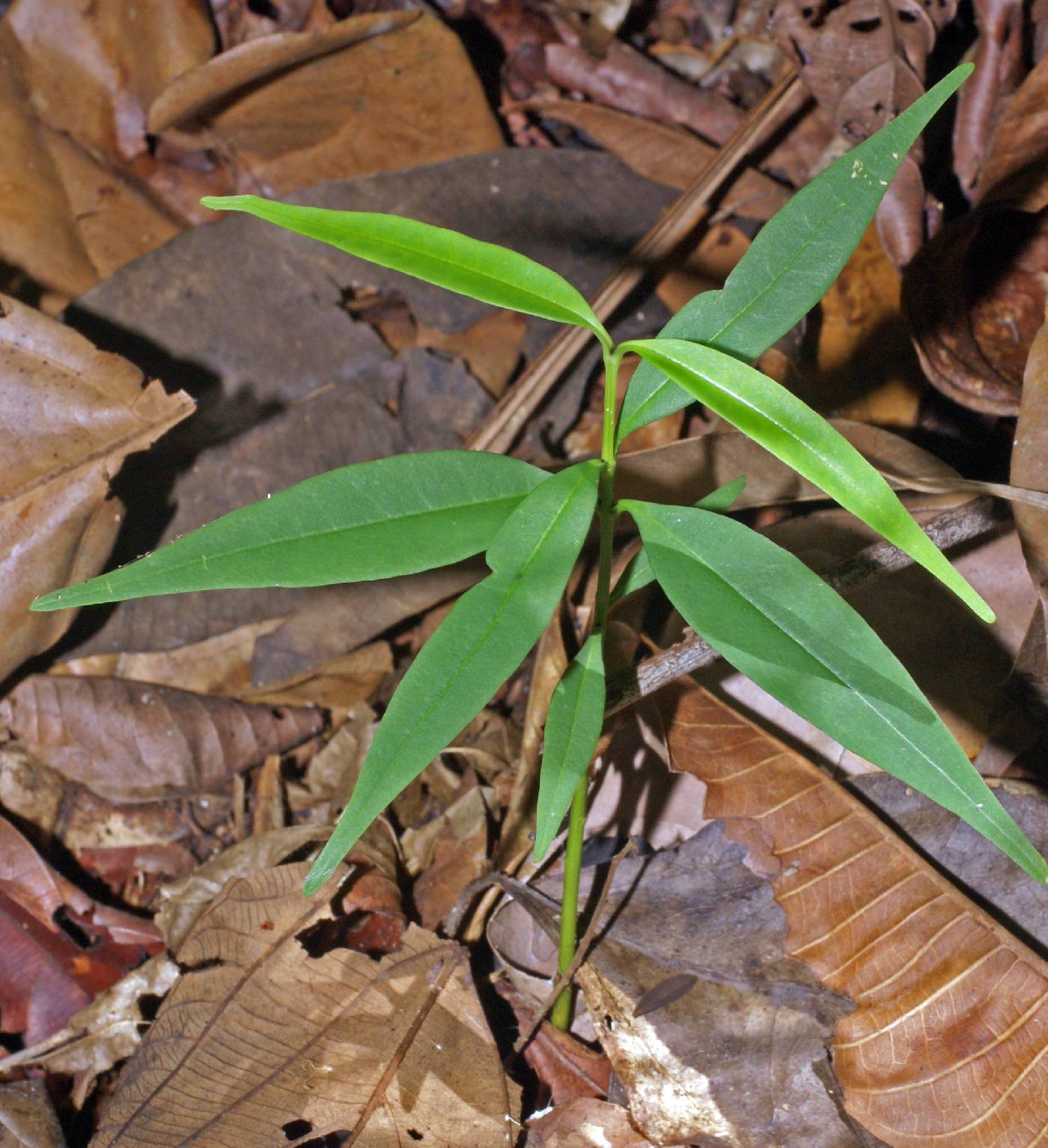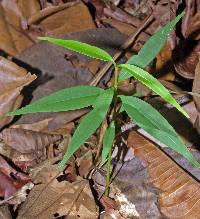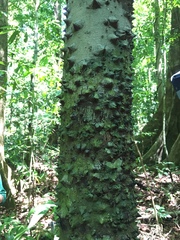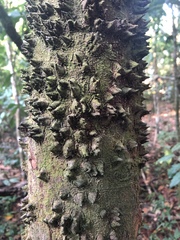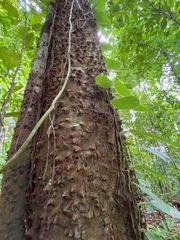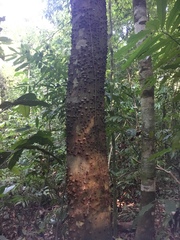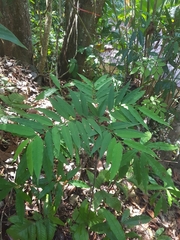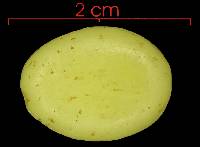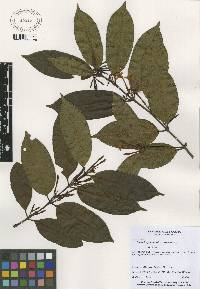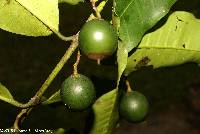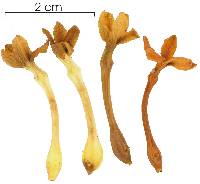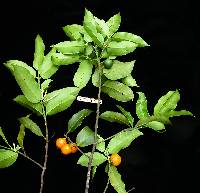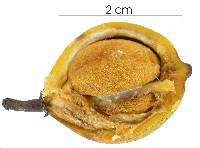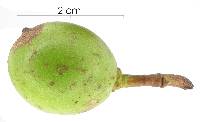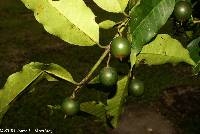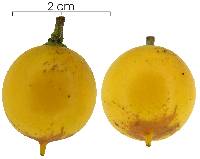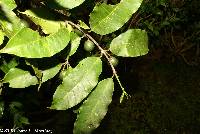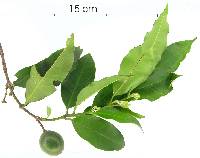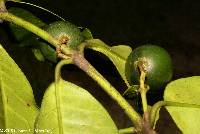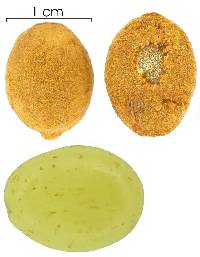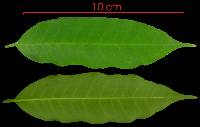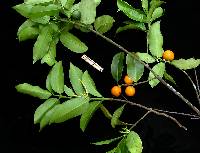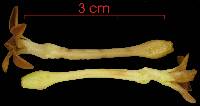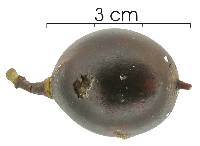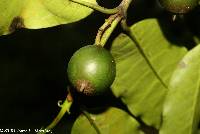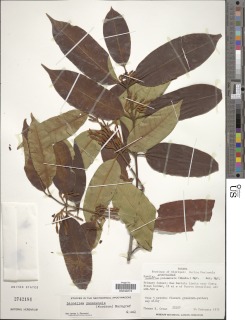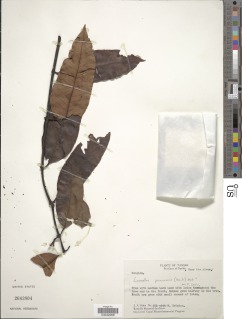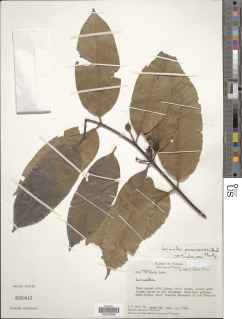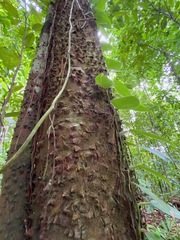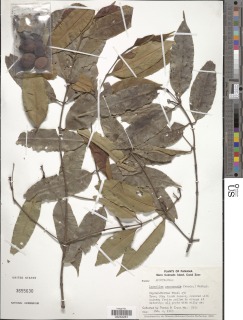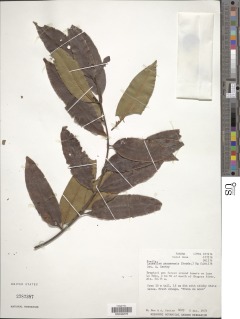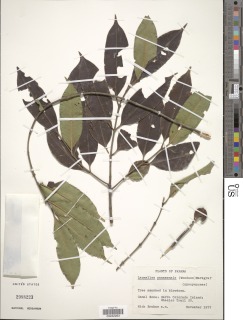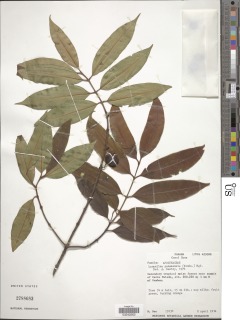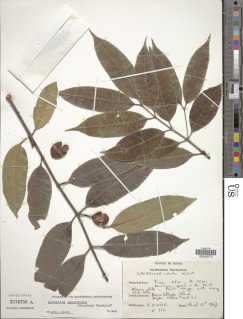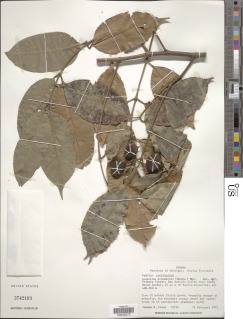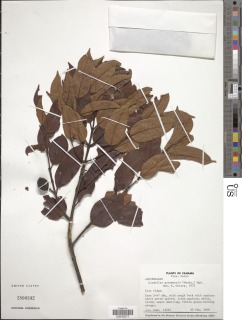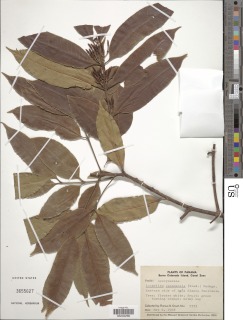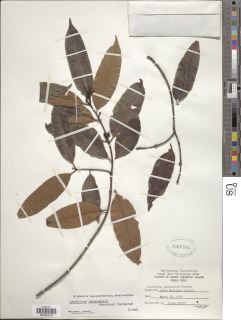

|
|
|
|
Family: Apocynaceae
lagarto negro, more...perezozo
[Zschokkea panamensis R. E. Woodson] |
Description: A medium-sized tree with a straight trunk. The bark is dark, nearly black, and has irregular, blunt, conical spines. Larger trees have small buttresses at the base. Leaves are long and narrow, opposite, spaced regularly along branches, in flat plane. If a leaf is broken off, copious white latex drips out. The white latex is also readily visible if the bark is slashed. Reproduction: Flowers are small cream-colored or yellow tubes, in clusters at the base of the leaves. They are produced from October to February. The fruit is a fairly large, hard, spherical berry, green then turning yellow, maturing from November to June. Distribution: Widespread on the Caribbean half of the isthmus, including Santa Rita, but seldom common. Only on the peninsula west of Barro Colorado Island, and in a small patch at Sherman, are there dense population. Similar Species: The long branches with regularly spaced leaves might at a glance look like compound leaves with many leaflets. Once you see that they are not, this species is pretty easy to recognize, given narrow leaves and dripping latex. Another Apocynaceae with opposite leaves and latex is LK malogu Maloetia guatemalensis, LK2 but its leaves are wider. A congener, LK lacmsp L. speciosa, LK2 is similar to L. panamensis, but its leaves are larger, and it is restricted to montane sites. All other opposite-leaved trees have no latex or sparse latex that exudes slowly in tiny droplets. Uses: The wood is hard and fine quality, and has many uses, and the fruits are edible. Kuna Indians are said to use the latex to enhance milk production of nursing women. Descripción: Árbol de 10 a 20 m de alto. Copa redondeada y con follaje denso. Tronco con espinas cónicas y raíces tablares pequeñas en la base. Corteza exterior negra. Ramitas terminales verdes. El desprendimiento de cualquier parte de la planta produce el flujo de una savia lechosa. Hojas simples y opuestas, de 5-15 x 2-5 cm, elípticas o lanceoladas, con ápice acuminado, bordes ondulados y base obtusa. Pecíolo de 0.3-0.7 cm de largo y acanalado en la parte superior. Inflorescencias axilares. Flores tubulares blancas, cremas o amarillentas. Frutos en bayas globosas, de 1-2.5 cm de largo, verdes y terminados en una punta aguda, tornándose amarillos o marrón castaño al madurar. Semillas de 1-2 por fruto, rodeadas por una pulpa amarillenta. Datos Ecológicos: La especie crece a bajas y medianas elevaciones, en bosques húmedos o muy húmedos. En Panamá se encuentra en las provincias de Chiriquí, Coclé, Colón, Darién, Panamá, Veraguas y la comarca de Guna Yala. Común y fácil de observar en bosques lluviosos de la vertiente del Caribe en Panamá. Florece y fructifica de octubre a febrero, y de mayo a noviembre. Especies Parecidas: A menudo se confunde con LK lacmsp Lacmellea speciosa LK2 , pero en L. speciosa las hojas son de mayor tamaño y presentan puntos negros por el envés, además L. speciosa es una especie rara que ocurre en bosques muy húmedos o nubosos. Usos: La madera es de grano fino, empleada para la fabricación de mangos de herramientas, cajones, tableros y aglomerados. Los frutos maduros son comestibles. La savia lechosa es dulce al paladar. Los indios Guna de Panamá utilizan la savia lechosa para aumentar la producción de leche materna después del parto y para tratar las enfermedades vaginales. En otras regiones del país la savia lechosa se utiliza para curar el dolor de muelas. Con las hojas se prepara un purgante usado para eliminar los parásitos intestinales. Tree, to 20 m tall, +/- glabrous, sometimes armed with short stout spines; outer bark coarse, thin, hard; inner bark thick, tan; sap milky, abundant in trunk, branches, and fruits. Leaves opposite; petioles to 1 cm long; blades oblong-elliptic, acute to long-acuminate, obtuse and decurrent on petiole at base, 5-13 cm long, 2-4 cm wide. Flowers congested in axillary cymes; pedicels 2-4 mm long; calyx lobes +/- rounded, 1-1.5 mm long, ciliate; corolla narrowly tubular, white, drying burnt-orange, the tube to 3 cm long, puberulent inside, somewhat inflated just above base and at insertion of anthers near apex of tube, the limb to 1.5 cm diam, the lobes spreading, rounded to acute; anthers free, ca 4 mm long; style shorter than anthers at anthesis; stigma 1, cylindrical, papillose. Fruits broadly ellipsoid to obovoid, 2-3 cm long, yellow-orange, with a short persistent style to 3 mm long; exocarp +/- leathery; mesocarp fleshy, sweet and tasty, with copious milky sap; seeds 1-4, usually 2, ellipsoid, usually flattened on one side, ca 1.5 cm long. Croat .5373. Occasional in the forest, most abundant on the slope toward the tower; not seen in higher levels of the old forest. Flowers from March to August, mostly from April to June. The fruits mature from February to June, mostly from March to May of the following year. Juvenile fruits are common in the late rainy season. Leaves of this species are a favorite of sloths and as much as one-fifth of the foliage is sometimes cropped (E. Montgomery, pers. comm.). |
|
|
|

